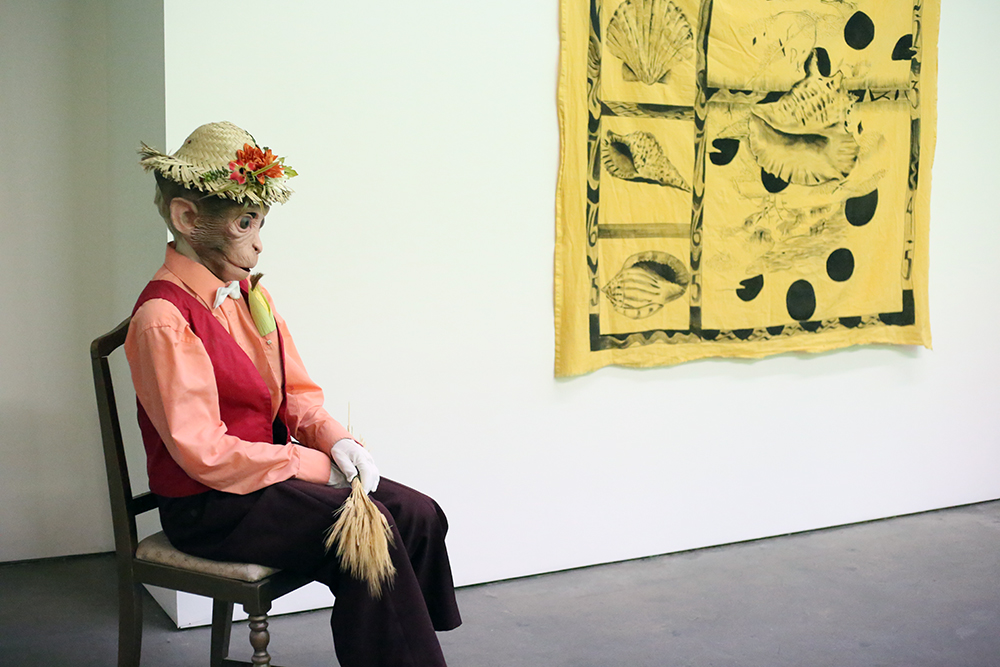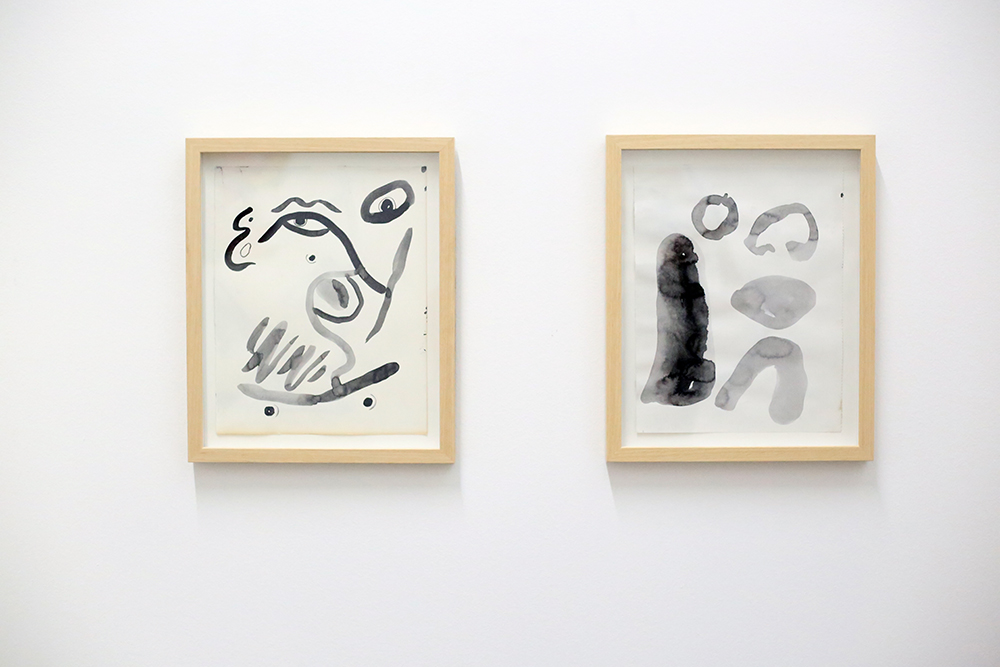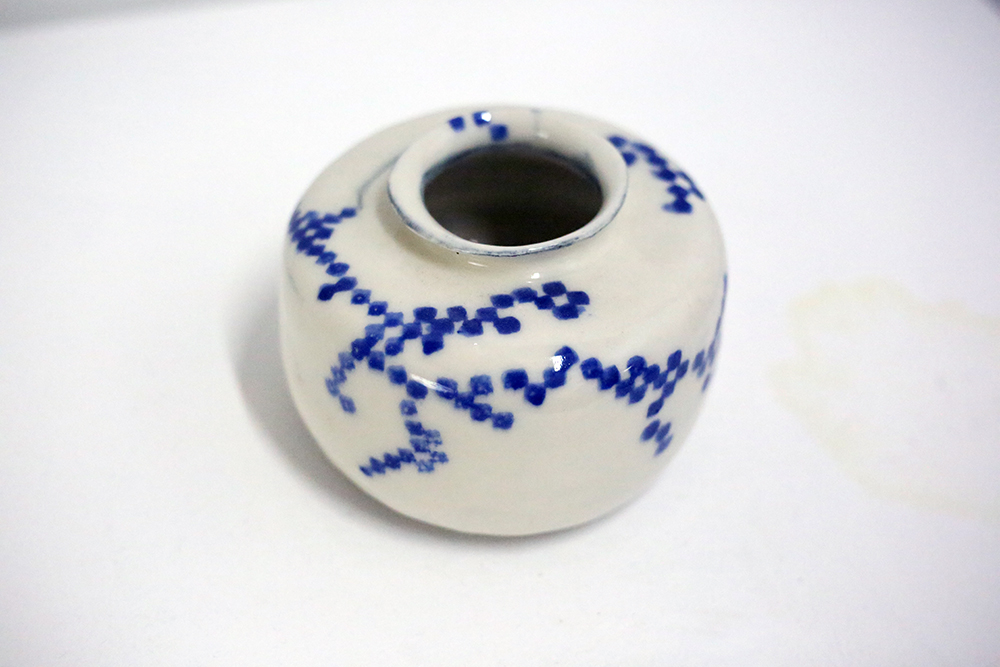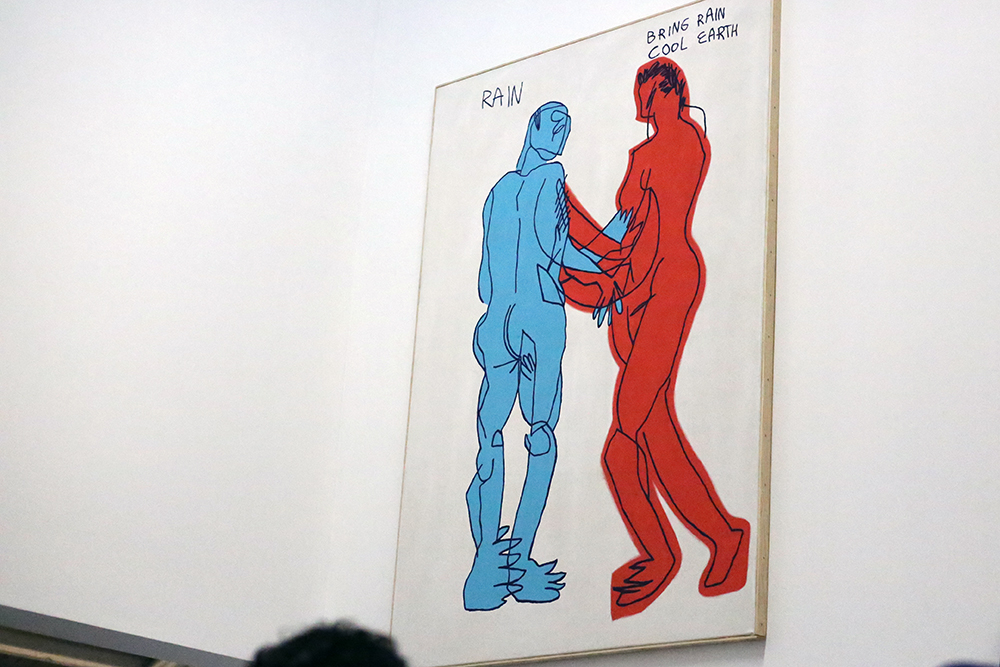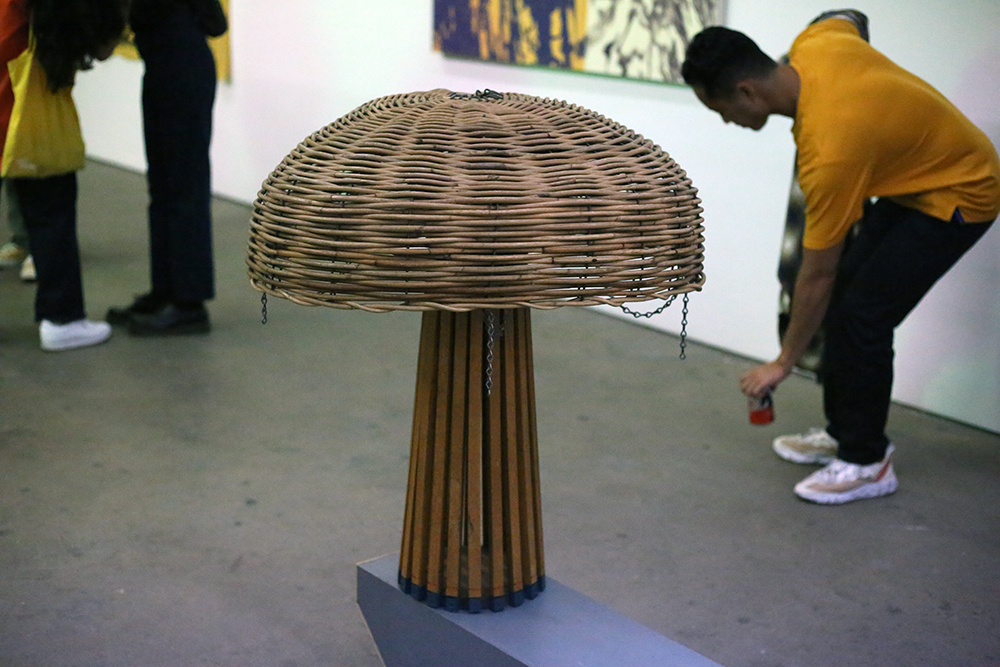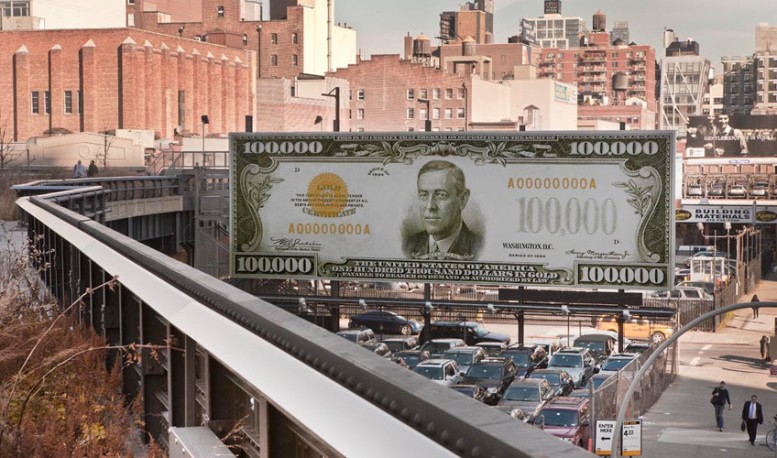The exhibition, THREES COMPANY, is titled in response to Marnie Weber's chimp sculpture. It is a platform of association to the exhibition of 33 artists and their works. The exhibition includes works from Andrew Arduini, John Baldessari, Devandra Banhart, Tami Demaree, Aryo Toh Djojo, Jason Roberts Dobrin, Jon Elder, John Emison, Jamie Felton, Ryan Fenchel, Matt Fishbeck, Daniel Gibson, Dan Graham, Gibby Haynes, Steven Hull, Allie Ihm, Johanna Jackson, Patrick Jackson, Chris Johanson, Janet Jenkins, Caleb Lyons, T Kelly Mason, Stefan Meier, Robert Moreland, Max Ostrow, Nate Page, Ornella Pacchioni, Taylor Marie, Prendergast, Ariel Rosenberg, Mira Schnedler, Tran Truong, Alex Wallman and Marnie Weber. The exhibition is on view through September 30 at Dan Graham 3.0 670 Anderson Street, Los Angeles. photographs by Lani Trock
A Great John Baldessari Piece from His Movie Script Series
A great John Baldessari piece from his Movie Script series, which was on view at a show that just ended at Marian Goodman gallery.
John Baldessari New Exhibition at Marian Goodman
Marian Goodman Gallery in New York presents an exhibition of new works by John Baldessari titled Double Play which is on view now. The exhibition consists of a new series of paintings on canvas in which Baldessari engages us in his strategic and diverse practice of selection and montage, removal and assembly, ‘taking an image to make an image’. In this series, he draws on the art historical canon, rather than photography and film, to juxtapose the part and whole, to contrast and weigh language, image, and color, and to interrupt context in order to arrive at new relationships, narrative allusions, or an enigmatic totality. “I am always looking to invert priorities, to make the unimportant important, leaving images out and letting [us] fill in the blanks”, says Baldessari. Double Play will be on view until November 21, 2012 at Marian Goodman Gallery, 24 West 57th Street, NY, NY
John Baldessari, The First $100,000 I Ever Made
High Line Art, presented by Friends of the High Line, today unveiled The First $100,000 I Ever Made, a new work created by legendary artist John Baldessari for the 25-by-75 foot billboard next to the High Line on 10th Avenue at West 18th Street. This is the first of three works to be presented as part of a new series called HIGH LINE BILLBOARD. The First $100,000 I Ever Made will remain on view until Friday, December 30, 2011.
[ART] Pacific Standard Time
Post-war Los Angeles was like a subtropical greenhouse where art flourished – a movement emerged that would define the second half of twentieth century contemporary art in America – artists like Ed Ruscha and John Baldessari, and major events like Warhol's first exhibition, and Marcel Duchamp's first retrospective. But most of what we know about this time is only the very tip of the iceberg and the Getty Research Institute has been tirelessly diligent: "Through archival acquisitions, oral history interviews, public programming, exhibitions, and publications, the Research Institute is responding to the need to locate, collect, document, and preserve the art historical record of this vibrant period." And as a result of these efforts one of the more monumental series of art exhibitions, collectively entitled Pacific Standard Time, will be on view this fall and winter at 60 venues across Southern California, including the Getty, the Hammer and LACMA. The above photograph, by Julian Wasser, is of a nineteen year old Eve Babitz – considered a muse or a midwife to the Los Angeles art movement – nude and playing chess with Marcel Duchamp at his retrospective. She won.
[BOOKS] Rebels in Paradise
"Los Angeles, 1960: There was no modern art museum and there were few galleries, which is exactly what a number of daring young artists liked about it, among them Ed Ruscha, David Hockney, Robert Irwin, Bruce Nauman, Judy Chicago and John Baldessari. Freedom from an established way of seeing, making, and marketing art fueled their creativity, which in turn inspired the city. Today Los Angeles has four museums dedicated to contemporary art, around one hundred galleries, and thousands of artists. Here, at last, is the book that tells the saga of how the scene came into being, why a prevailing Los Angeles permissiveness, 1960s-style, spawned countless innovations, including Andy Warhol's first exhibition, Marcel Duchamp's first retrospective, Frank Gehry's mind-bending architecture, Rudi Gernreich's topless bathing suit, Dennis Hopper's Easy Rider, even the Beach Boys, the Byrds, the Doors, and other purveyors of a California style. In the 1960s, Los Angeles was the epicenter of cool." You can purchase the book here.

